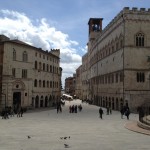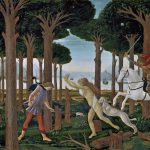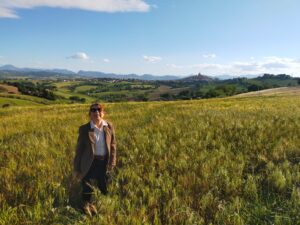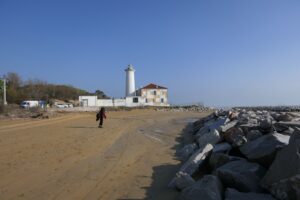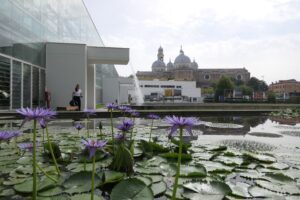You are spoilt for choices, true story.
Accessible Ravenna: Art, Culture and more
Let’s take a closer look at the place, from a different perspective
8 UNESCO monuments, 700th anniversary of Dante’s death, Mosaics and Street Art. These are just some of the interesting attractions just waiting to be discovered here. Among the most beautiful towns in Emilia-Romagna, and completely flat, Ravenna Old Town is paved mostly with cobblestones: not ideal for mobility, but the excellent maintenance makes the centre sufficiently comfortable even for strollers and wheelchairs. Ravenna has been chosen as a capital three times: first of the Western Roman Empire, then of the Kingdom of the Ostrogoths, and lastly of the Byzantine Exarchate – and has a great deal to offer visitors: UNESCO Monuments, Mosaics and Street Art!
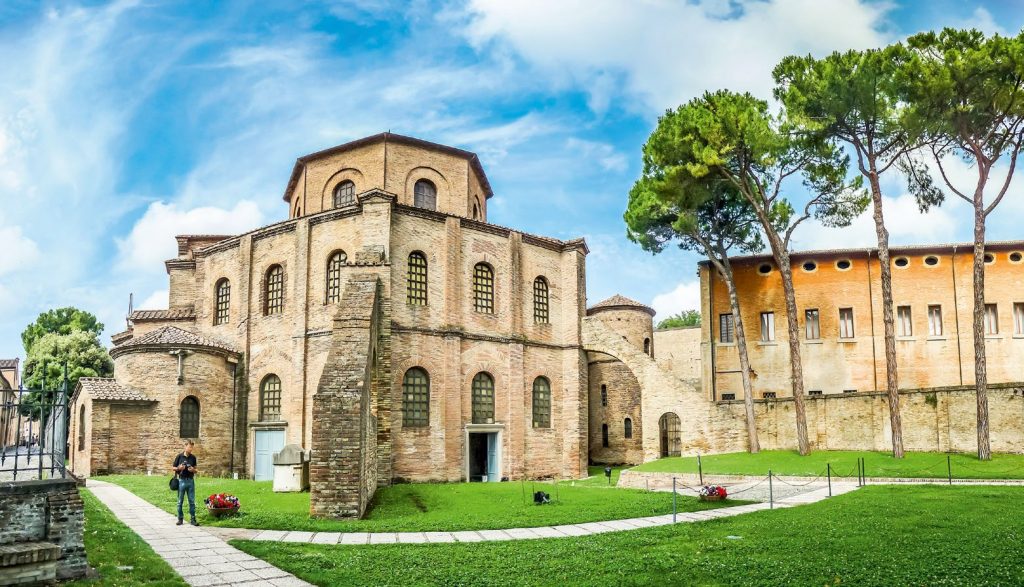
UNESCO Collection Mausoleum of Galla Placidia. Entrance from Via Galla Placidia, paved with cobblestones. This fifth-century funeral monument was built for the devout Christian and art lover, daughter of Theodosius. The delightful interior is tiled throughout with the famous early Christian wall mosaics, which everyone can admire in all their beauty, thanks to the small dimensions of the mausoleum.
Basilica of San Vitale. To reach the accessible entrance, you’ll need to pass through the Galla Placidia garden, from where a large entrance with a wooden ramp links the Mausoleum to the Basilica. Built on the orders of the Emperor Justinian I in the 6th century AD, when Ravenna was proclaimed capital for the third time, this time of the Byzantine Empire in Europe. In the chancel is the famous mosaic depicting the entourage of Justinian I and his wife Theodora, which some of the visitors may recognise from their history of art books.
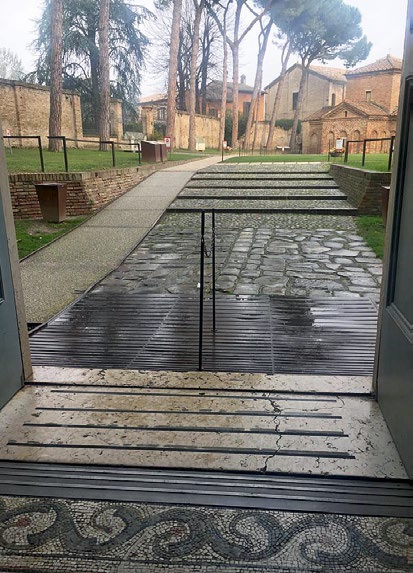
San Vitale Basilica 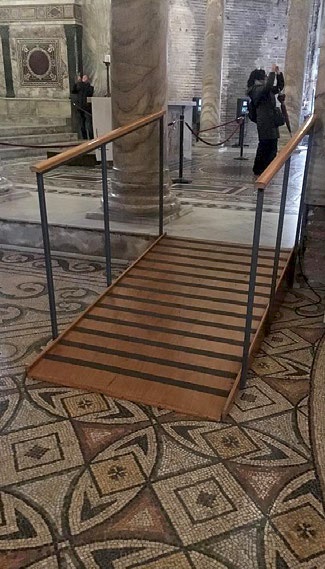
Detail of the accessible path, Entrance ramp 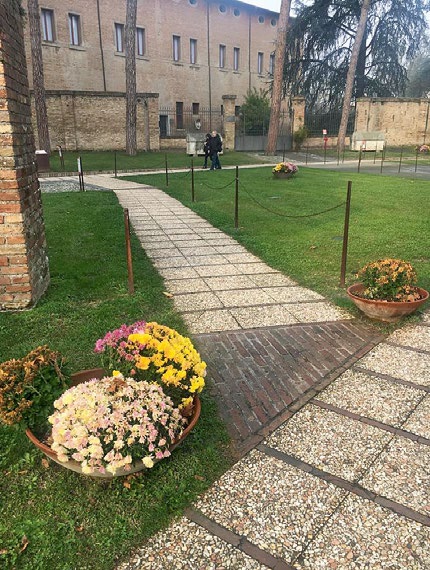
Baptistery of Neon (Battistero Neoniano, or Battistero degli Ortodossi). With a dome covered in splendid mosaics, it was built on the orders of Bishop Neon, after which it is named. It can be entered using the broad ramp accessible from the small gardens that run alongside the Cathedral.
Chapel of St Andrew. Located inside the city’s Archiepiscopal Museum (Museo Arcivescovile), it is accessible from Piazza dell’Arcivescovado. The famous Chapel of St Andrew also has UNESCO World Heritage status, thanks to its marvelous mosaics. Entrance is accessible through the main door of the museum; ask for access to the lift at the side. N.B.: to visit the chapel, you have to take the lift up to the first floor, where you’ll find a further two steps with a mobile ramp.
Ravenna and Dante
But as we mentioned, there’s more to Ravenna than UNESCO and Mosaics. We all know that Dante Alighieri settled here when he was exiled from his native Florence, and that in Ravenna he wrote a number of the canti that make up his most famous work, the Divine Comedy. 2020 was the 700th anniversary of his death, and as you explore the city, you’ll find several attractions linked to Dante. Keep your eyes peeled for the many eclectic Street Artists that have helped embellish Ravenna with installations and murals inspired by the poet and his works.
Basilica of St Francis. Located in Piazza San Francesco, which marks the start of the “silence zone” dedicated to Dante. This church hosted the funeral of Dante Alighieri, who was offered hospitality by the Friars Minor Conventual, and died here during the night between 13 and 14 September 1321. The church is very simple, and has a particular charm. It can be visited free of charge. The Crypt is not accessible for visitors who have difficulty walking; the view is impressive, because it is partially flooded with water from the sinking ground around it. Set into the steps is the tomb of Bishop Neon. Between the Basilica of San Francesco and the murals depicting Dante, you’ll find a ramp that will allow you to reach the Tomb of Dante Alighieri, in Via Dante Alighieri 9, where the poet’s remains are kept inside a small Neoclassical temple built by the architect Morigia. Every year, the anniversary of the poet’s death is marked by a group of people from Florence who come to his tomb to refuel the oil lamp that burns perpetually above the tomb.
Ravenna: Street Art and more
You’ll find the work of many street artists in Ravenna. Among the most famous are Blub and Kobra, as well as Invader, whose mosaic-like art is inspired by the famous “Space Invaders” arcade game from the 1970s. Over 40 of this eclectic artist’s works are scattered throughout the city, and those visiting with children might like to visit the Space Invaders website, or download the app to set off on a treasure hunt, clocking up points for each artwork found. Once you’ve finished visiting the “Silence Zone”, go along the pedestrian area, where you’ll pass by the complex of the Friars Minor and the Franciscan Cloisters, home to the Dante Museum, recommended for young people in particular thanks to its simple depiction and description of the Divine Comedy, also using comic art.
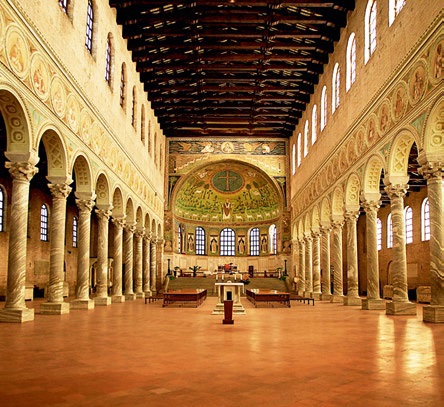
Sant’Apollinare in Classe Church 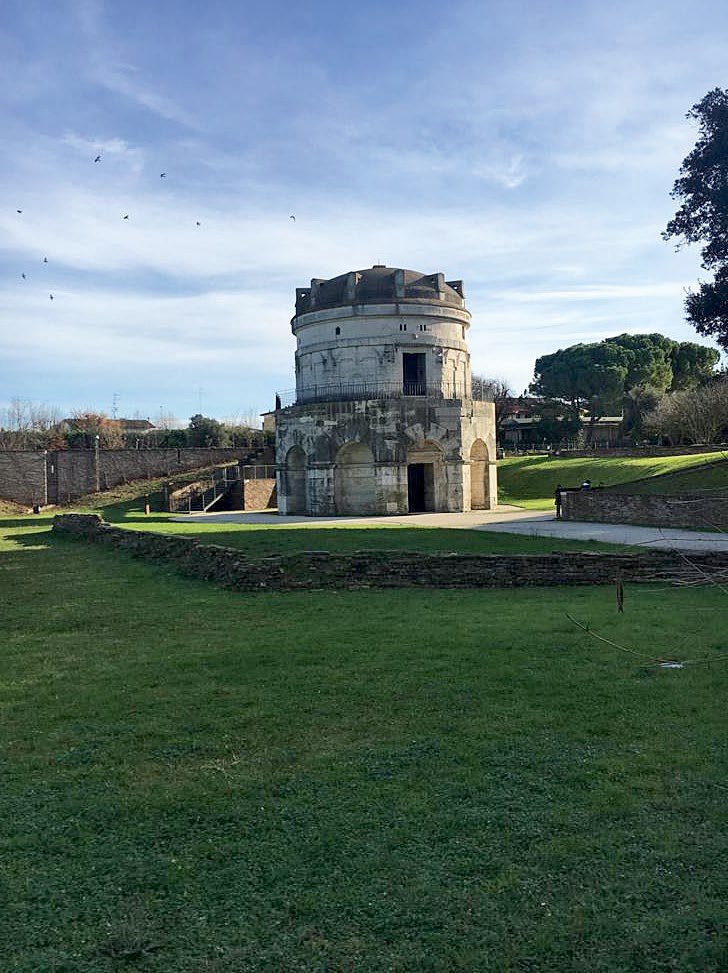
Mausoleum of Theodoric 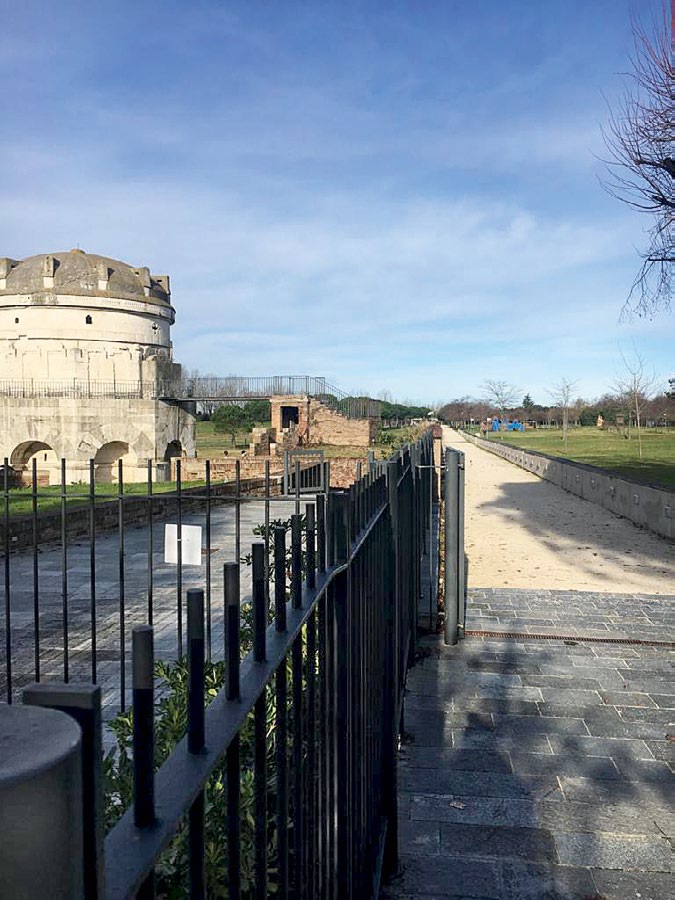
Connection path
Basilica of Sant’Apollinare Nuovo, a UNESCO World Heritage site thanks to the mosaics on the walls of the central nave depicting the Processions of Martyrs and Virgins. This Basilica was built by the Ostrogothic King Theodoric, and later altered during the reign of Justinian I. Follow Via Roma and turn onto the pedestrian street Corso Diaz, where, near Caffè Letterario, you can see a number of traces of “Blub“, the Street Artist that has scattered little artworks throughout the town centre: see how many you can spot of the 13 “hidden treasures” that embellish the doors of the electricity, gas and water utility cabinets! A tip: keep looking upwards, because Ravenna is full of little gems; in addition to these installations, you’ll find contemporary mosaic details set into the street name plates, as well as the entrances to houses or flower pots.
Ravenna miscellaneous
It’s impossible to leave Ravenna without taking away a souvenir of all the art and beauty you’ve had the chance to admire and to touch. And what better place to look than the shops of the local craft workers who still use the same ancient technique to shape mosaic tesserae and unique works! You’ll find picture frames, mirrors and all sorts of little artworks to decorate your home or as a unique gift for your friends or loved ones.
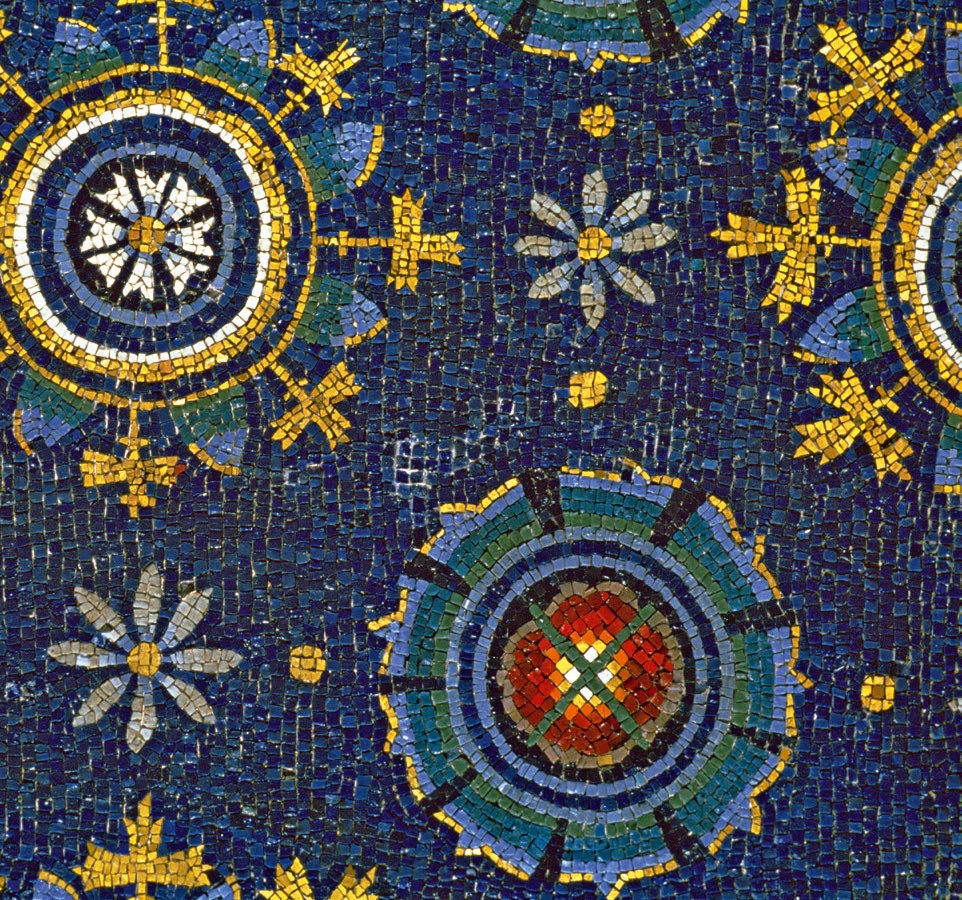
Galla Placidia Mosaic 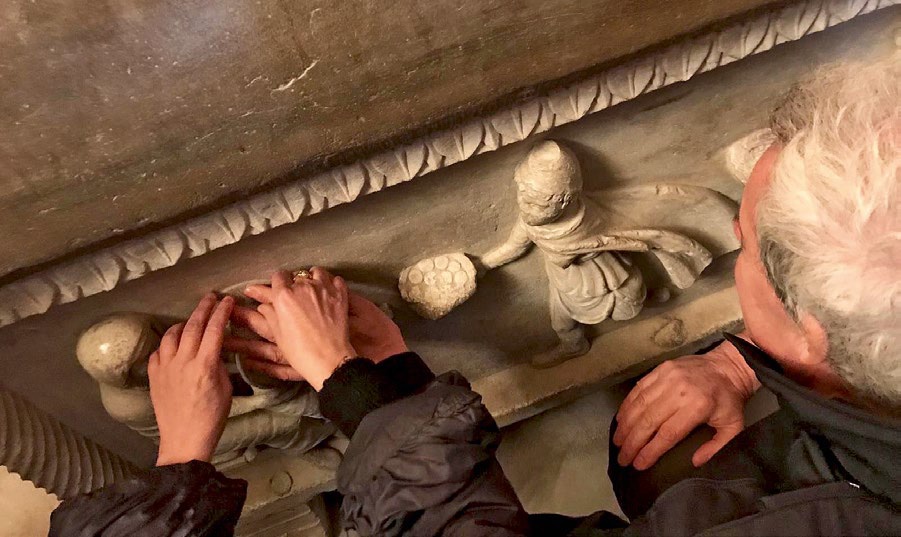
Tactile path for blind visitors
I recommend the Parcheggio San Vitale carpark, which has eight places reserved for vehicles displaying the Blue Badge disabled parking permit.
To visit the UNESCO monuments, you can purchase a cumulative ticket online here, or from the ticket office in Via Argentario (40 m from the entrance to the San Vitale complex).
The length of the route varies depending on the monuments you decide to visit. Maximum length 4 km. The route is suitable for: wheelchairs, electric scooters, powered handbikes, electric wheelchairs, walking frames, strollers. For Network V4A accommodation facilities in the area, see here. To download the “Ravenna for All” guide, see here.
Useful tips
Ravenna Friendly Guides is the brand name adopted by a group of nine independent tourist guides especially attentive to issues regarding accessible, inclusive tourism. The Ravenna Friendly Guides boast years of experience in the tourism sector, and have a variety of different skills that allow them to offer ideas for cultural and visitor routes guaranteed to make the tourism experience something everyone can access and enjoy. Established in 2019, following a training programme aimed at accompanying blind and visually impaired visitors, the guides have created a specific route in Ravenna thanks to the use of tactile tools and to the opportunity offered by the pertinent bodies for visitors to touch the artworks, using gloves. A number of tactile visits have also been devised, which will begin as soon as the public health emergency allows. In the meantime, the Ravenna Friendly Guides are pursuing their training to offer increasingly appealing, inclusive experiences.
Ravenna offers UNESCO Monuments, Mosaic and Street Art, allowing an unmissable opportunity to explore the city’s past, present and future
Each year, on the anniversary of Dante’s death, a group from Florence visits his tomb to refuel the oil lamp that burns there perpetually.
Roberto Vitali
About the author
Roberto Vitali is the life and soul of Village4All, founded to offer tourism opportunities for everyone, he has appeared in almost every issue of our Magazine so far. He writes an invaluable column for us, entitled “Accessible Travel”. This in no way means his articles are “special”, or different from any others that deal with tourist destinations. In this case, for example, Roberto offers us a wealth of historical and other information on a destination with numerous attractions: Ravenna. He simply adds some notes that should always be provided: accessibility criteria, which are valid for everyone. They’re useful for wheelchair users, for the visually impaired, or even just someone with a trolley to pull, or not as young as they used to be.

